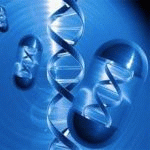Biotechnology
|
5 september 2017 12:15:21 |
| Fabricating PLGA microparticles with high loads of the small molecule antioxidant N-acetylcysteine that rescue oligodendrocyte progenitor cells from oxidative stress (Biotechnology and Bioengineering) |
|
Tweet Reactive oxygen species (ROS), encompassing all oxygen radical or non-radical oxidizing agents, play key roles in disease progression. Controlled delivery of antioxidants is therapeutically relevant in such oxidant-stressed environments. Encapsulating small hydrophilic molecules into hydrophobic polymer microparticles via traditional emulsion methods has long been a challenge due to rapid mass transport of small molecules out of particle pores. We have developed a simple alteration to the existing water-in-oil-in-water (W/O/W) drug encapsulation method that dramatically improves loading efficiency: doping external water phases with drug to mitigate drug diffusion out of the particle during fabrication. 0.6 to 0.9 Ám diameter PLGA microparticles were fabricated, encapsulating high loads of the antioxidant N-acetylcysteine (NAC), and released active, ROS-scavenging NAC for up to five weeks. Encapsulation efficiencies, normalized to the theoretical load of traditional encapsulation without doping, ranged from 96 to 400%, indicating that NAC-loaded external water phases not only prevented drug loss due to diffusion, but also doped the particles with additional drug. Antioxidant-doped particles positively affected the metabolism of oligodendrocyte progenitor cells (OPCs) under H2O2-mediated oxidative stress when administered both before (protection) or after (rescue) injury. Antioxidant doped particles improved outcomes of OPCs experiencing multiple doses of H2O2 by increasing the intracellular glutathione content and preserving cellular viability relative to the injury control. Furthermore, antioxidant-doped particles preserve cell number, number of process extensions, cytoskeletal morphology, and nuclear size of H2O2-stressed OPCs relative to the injury control. These NAC-doped particles have the potential to provide temporally-controlled antioxidant therapy in neurodegenerative disorders such as multiple sclerosis that are characterized by continuous oxidative stress. This article is protected by copyright. All rights reserved |
| 107 viewsCategory: Biotechnology |
 Constructing arabinofuranosidases for dual arabinoxylan debranching activity (Biotechnology and Bioengineering) Constructing arabinofuranosidases for dual arabinoxylan debranching activity (Biotechnology and Bioengineering)Conversion of an inactive xylose isomerase into a functional enzyme by co-expression of GroEL-GroES chaperonins in Saccharomyces cerevisiae (BMC Biotechnology) 
|
| blog comments powered by Disqus |
MyJournals.org
The latest issues of all your favorite science journals on one page
The latest issues of all your favorite science journals on one page



